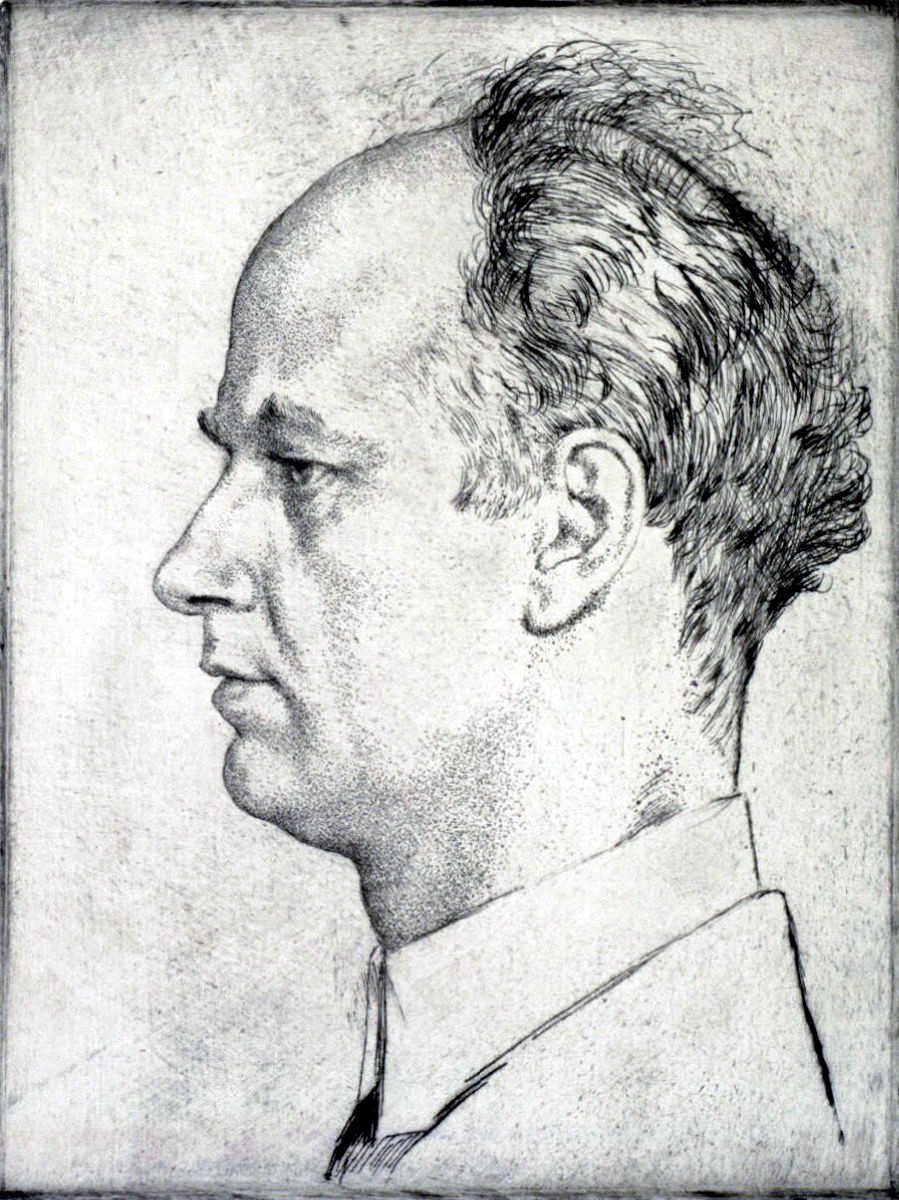Wilhelm Furtwängler
(January 25, 1886 – November 30, 1954)German conductor and composer.
He is considered to be one of the greatest symphonic and operatic conductors of the 20th century.
Symphony No 1 in B minor
Wilhelm Furtwängler's Symphony No. 1 in B minor, written between 1938 and 1941, is based on an earlier piece he wrote, a Largo in B minor from 1908. To this he added three more movements for a 4-movement work:
- Largo
- Scherzo. Allegro
- Adagio
- Moderato assai
Discography
Unlike his later two symphonies, Furtwängler himself never recorded this one. The work lasts about 80 minutes, so George Alexander Albrecht's interpretation on Arte Nova Classics requires two discs, while Alfred Walter conducting the Slovak State Philharmonic Orchestra, Košice only needs one Marco Polo CD.
Symphony No. 2 (1944)
Symphony No. 2 in E minor was written by Wilhelm Furtwängler between 1945 and 1946. After quitting his conducting posts in Germany and Austria in protest at Nazi cultural policy, Furtwängler moved to Switzerland, where he wrote this symphony. It is in four movements:
- Assai moderato - Allmählich belebend (bis Allegro) - Von hier ab festes Tempo (Allegro)
- Andante semplice (Tranquillo) (in C major) [1]
- Un poco moderato - Più Allegro - Più Moderato - Allegro - Moderato - Allegro (movement is in A minor)
- Langsam - Moderato andante - Allegro molto - Moderato - Langsam - Moderato - Presto
The symphony is scored for Piccolo,[2] 3 flutes, 2 oboes, cor anglais, 3 clarinets, 2 bassoons, double-bassoon, 4 horns, 3 trumpets, 3 trombones, tuba, timpani, percussion (drum set and tamtam), and strings.
The outer movements are in sonata form, with some related material.[3] The third movement, which follows the second movement without pause ("attacca Scherzo!")[4] is a scherzo with trio. Unlike Bruckner, Furtwängler makes smooth transitions into and out of the trio.
Like Furtwängler's other symphonic works, the Symphony No. 2 is very rarely performed. Roughly 80 minutes in length, the work is heavily indebted to the late-Romantic style of composers like Anton Bruckner and Richard Wagner. As conductor/musicologist Christopher Fifield has observed, most of Furtwängler's works "are of Brucknerian length but, devoid of Brucknerian genius, few have the material to sustain such proportions."[5]
However, the symphony has strong advocates: Eugen Jochum recorded the work with the Bavarian Radio Symphony Orchestra in 1954, and there is another recording made by Daniel Barenboim conducting the Chicago Symphony Orchestra,.[6] There are at least two other recordings besides those conducted by the composer, though in complete cycles of his symphonies.[7] Arthur Honegger wrote of this work, "The man who can write a score as rich as [this] is not to be argued about. He is of the race of great musicians."[8]
Furtwängler himself recorded his Symphony No. 2 in a studio with the Berlin Philharmonic in December 1951. There also exist several public recordings, some of them having been released : with the Hamburg Philharmonic in 1948 (Société Wilhelm Furtwängler), with the Orchestra of Hesse Radio in Frankfurt in 1952 (Wilhelm-Furtwängler-Gesellschaft), with the Vienna Philharmonic in 1953 (Orfeo) and with the South-German Radio Symphony Orchestra in Stuttgart in 1954 (Mediaphon).
"Symphony No 3 in C sharp minor"
Wilhelm Furtwängler's Symphony No. 3 in C-sharp minor was written between 1951 and 1954.
It is in four movements:
- Largo
- Allegro
- Adagio
- Allegro assai
At first, the four movements had programmatic headings: "Disaster," "Under compulsion to life," "Beyond" and "The conflict continues."[1] At the time of his death, Furtwängler was still working on the last movement. In 1956, Joseph Keilberth conducted the Berlin Philharmonic in the première of the first three movements. Elisabeth Furtwängler did not allow the Finale to be performed until much later (a piece more complete than, say, the Finale of Bruckner's Symphony No. 9). Yehudi Menuhin conducted the public premiere of the whole piece in 1986, four years after a transmitted BBC studio performance with the BBC Symphony Orchestra conducted by Brian Wright.[2]
Discography
To complement Furtwängler's own recording of his Symphony No. 2 with the Berlin Philharmonic, the Orfeo label recorded Wolfgang Sawallisch for this one with the Bayerisches Staatsorchester. Sawallisch's recording does not include the Finale, but Alfred Walter's and George Alexander Albrecht's do (conducting the RTBF Symphony Orchestra on Marco Polo and the Staatskapelle Weimar on Arte Nova, respectively).
'♣ 음악 감상실 ♣ > [交響曲(Symphony)] ' 카테고리의 다른 글
| Paul von Klenau (1883-1946) : Symphony No. 7 « Storm Symphony » (1941) (0) | 2015.10.01 |
|---|---|
| František Antonín Rossler-Rosetti 4 Symphonies (0) | 2015.09.29 |
| Friedrich Witt - Symphony in C-major "Jena" (0) | 2015.07.26 |
| Anton Reicha - Symphony in E-flat major, Op.41 (1803) (0) | 2015.07.25 |
| Adalbert Gyrowetz - Symphony 1,2,3번 (0) | 2015.07.23 |
